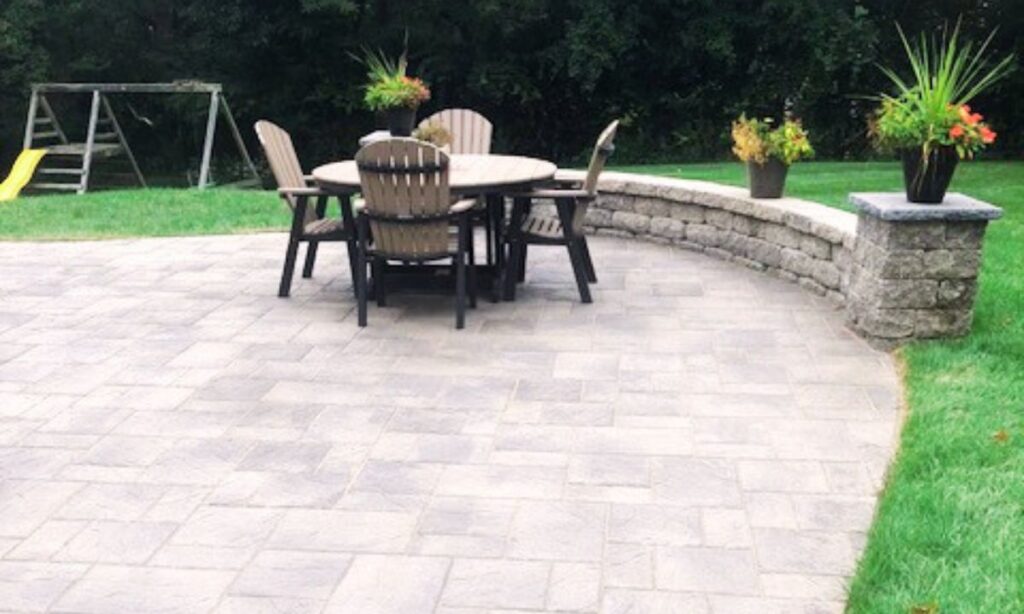Worn, cracked, or uneven pavers aren’t just an eyesore they’re a safety hazard and a sign your property may be due for essential repairs. In St. Louis, where heavy rainfall, freezing winters, and clay-heavy soil affect everything from driveways to patios, it’s easy for minor paver issues to turn into major problems.
This guide breaks down the most common signs your pavers need attention—along with expert-backed explanations and next steps tailored to Missouri homeowners.
Paver Damage Checklist: What to Watch For
Here’s a quick look at the most common red flags indicating your pavers need attention:
- Uneven or sunken sections that create trip hazards
- Cracks and chips from freeze-thaw cycles or weight stress
- Loose joints or shifting stones that let in weeds and water
- Water puddling from improper slope or erosion
- Faded colors or white marks caused by UV or efflorescence
These issues often start small but signal deeper structural problems that grow more expensive over time.
What Causes Paver Problems in St. Louis?
Why does St. Louis soil affect pavers so much?
Clay-heavy soil expands and shrinks with changing moisture.
When it rains, the ground swells. In dry or freezing weather, it contracts or heaves disturbing the layers beneath your pavers. This constant movement leads to misalignment, cracks, and weak spots.
Do cold winters really damage hardscaping?
Yes. Water that gets trapped beneath or between pavers will freeze and expand.
This freeze-thaw action pushes the pavers apart or cracks the surface, especially if the base isn’t compacted or sealed correctly.
The 9 Most Common Signs Your Pavers Need Repair

1. Are Your Pavers Wobbly or Uneven?
Yes, this is often due to a shifting or poorly compacted base.
You might walk across your patio every day without realizing it’s slowly shifting. But these early signs matter. If your walkway feels unstable or your patio tilts, it’s time for an inspection.
2. Are You Noticing Cracks and Chips?
Yes, these can result from moisture intrusion or repeated pressure.
Cracks don’t just look bad they let water in, which leads to deeper structural problems.
3. Is Water Pooling After It Rains?
Yes, this is a sign of drainage failure.
Standing water breaks down the bedding layer and attracts moss or algae. Poor grading or missing slope causes this issue.
4. Are Weeds Growing Between Your Pavers?
Yes, this usually means your joint sand has broken down.
When joints widen or sand washes out, it creates a welcome space for weeds and insects. This is a cue to refill gaps and check your base. Learn how proper prep prevents this on our stone and brick pathways for front yards.
5. Do You See Fading or White Marks?
Yes, this could be due to UV exposure or efflorescence.
White residue indicates trapped moisture. While not dangerous, it’s a sign the paver system needs attention.
6. Are Some Pavers Sinking Lower Than Others?
Yes, sunken areas usually mean the base has failed.
This happens from erosion, poor compaction, or water undermining the bedding layer.
7. Do You Notice Ant Hills or Soil Mounds?
Yes, insects digging under pavers disturb the base.
Over time, these tunnels weaken the structure and allow sections to shift.
8. Is There Slippery Algae or Moss?
Yes, this often grows in shaded areas with poor drainage.
Beyond appearance, this creates slip hazards and indicates water isn’t draining correctly.
9. Do Pavers Shift After Storms or Freezes?
Yes, this suggests deeper movement in the base layers.
Seasonal ground movement in Missouri means pavers without a stable foundation are at constant risk.
Why These Problems Are Bigger in Missouri
What local conditions make damage worse?
Clay soil, seasonal rain, and freeze cycles create a perfect storm.
These natural elements stress even well-built pavers. That’s why localized knowledge is crucial when choosing materials and planning installations.
What happens if you delay repairs?
Small issues lead to bigger failures costing more later.
A few loose pavers today could turn into a full replacement job next year. Addressing problems early preserves your investment.
Repair or Replace: What’s the Best Move?
Can I fix a few damaged pavers myself?
Yes, but only if the base is solid and the issue is minor.
DIY repairs work for cosmetic flaws. But sunken areas or recurring problems require professional help.
When is replacement smarter?
If more than 30% is affected or the base is unstable, go with replacement.
It’s more cost-effective long term, especially for driveways or areas under regular stress.
St. Louis Homeowners Also Ask
Should I seal my pavers?
Yes, every few years to extend lifespan and preserve color.
Sealing reduces moisture penetration and keeps your pavers looking clean and vibrant.
How much does basic repair cost?
It varies based on size and cause.
Minor fixes might run $300–$600. Major restoration can be higher but protects your home’s curb appeal and safety.
What’s causing the weeds between my bricks?
Likely broken-down joint sand and moisture.
Weeds and moss love damp, sandy cracks. Re-sanding and sealing help stop regrowth.
Will homeowner’s insurance cover this?
Usually not unless the damage results from a covered event.
Check your policy, but most standard home insurance won’t cover wear and tear.
What to Do If You See These Signs
If you’ve spotted any of these issues, act before minor paver damage becomes a major headache. Whether you need spot repairs or full replacement, paver installation services in St. Louis can restore safety, durability, and curb appeal. At Retaining Wall & Paving Solutions, we understand the local soil, climate, and installation best practices. We deliver lasting results that stand up to Missouri weather.
Additional Resources for St. Louis Property Owners
- St. Louis County Permits & Codes
- Missouri Soil Type Maps – USDA
- Best Practices – Interlocking Concrete Pavement Institute
